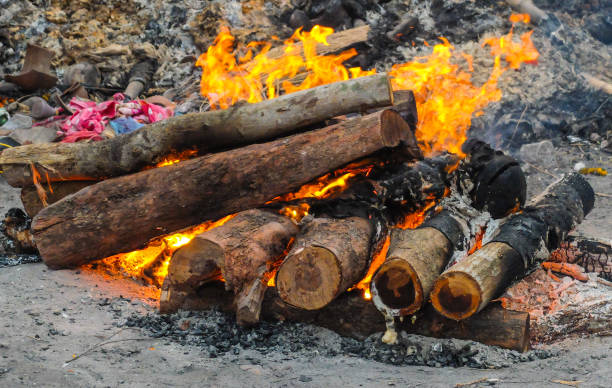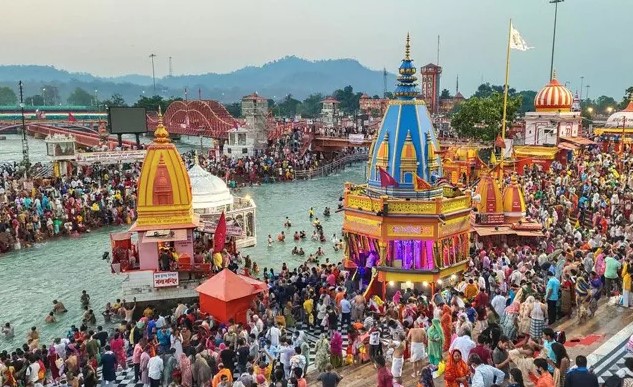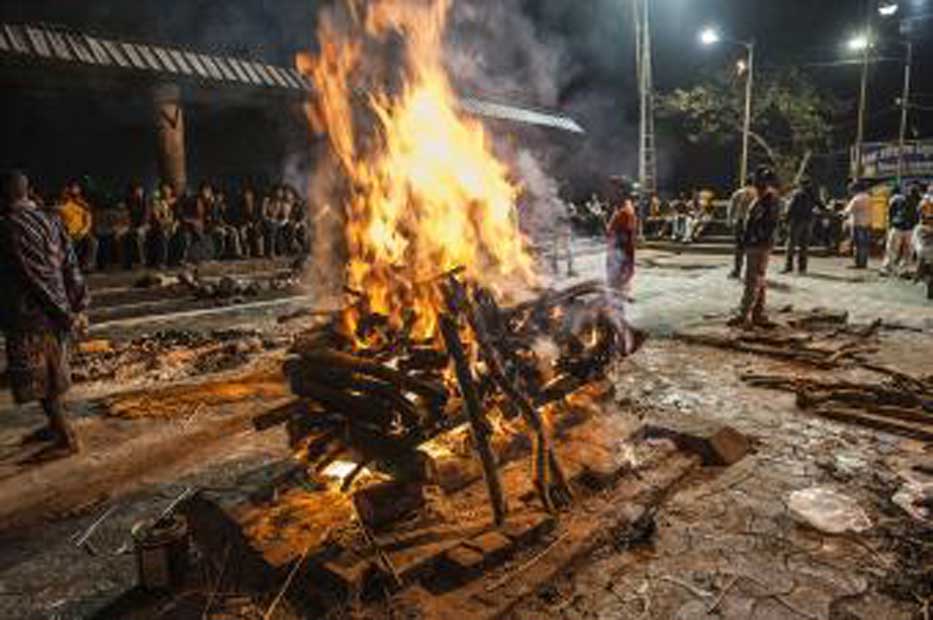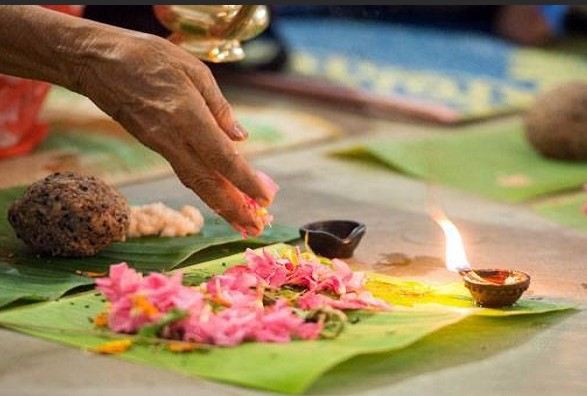Cremation -दाह-संस्कार Dah sanskar अन्तिम संस्कार : While Hindus generally cremate the dead, the bodies of saints and children are buried.
The cremation ground is called Shmashana (in Sanskrit), and traditionally it is located
near a river, if not on the river bank itself. Those who can afford it may go to special
sacred places like Kashi (Varanasi), Haridwar, Prayagraj (also known as Allahabad), Sri Rangam,
Brahmaputra on the occasion of Ashokastami and Rameswaram to
complete this rite of immersion of ashes into water.
Some of the cremations are performed at ghats.
Hindu funeral rites are performed by a priest and elder son, if son is not available
or the person has no son then the daughters nowadays also can perform the last rites.
Various ritual are done at the time of death. The family members and friends of the
deceased are gathered around the body while the ritual being performed. Which may include:
Antyeshi – or Dah sanskar अन्तिम संस्कार for read more .. Rituals click here
The last rites are usually completed within a day of death. While practices
vary among sects, generally, his or her body is washed, sandalwood paste and
turmeric is applied on the body, wrapped in a dhoti for a man and a saree for women.
The big toes are tied together with a string and a Tilak (red, yellow or white mark) is placed
on the forehead. A bed is made out of bamboo sticks on which the deceased is taken to
the Shamshan. The dead adult’s body is carried to the cremation ground near a river or water,
by family and friends, and placed on a pyre with feet facing south.
The eldest son, or a male mourner, or a priest – called the lead cremator or lead mourner –
then bathes himself and his hair is cut leaving only one strand of hair called shikha
before leading the cremation ceremony.
He walks all the way round the body the dry wood pyre with the body,
recites a hymn, places sesame seeds or rice called as pind on the deceased’s chest, hand and legs.
He sprinkles the body and the pyre with ghee (clarified butter),
then draws three lines signifying Yama (deity of the dead), Kala (time, deity of cremation) and the dead.
Antyeshi – or Dah sanskar अन्तिम संस्कार for read more .. Rituals click here
Prior to lighting the pyre, an earthen pot is filled with water, and the lead mourner (son/daughter or relative)
circles the body with it, before lobbing the pot over his shoulder so it breaks near the head.
Once the pyre is ablaze, the lead mourner and the closest relatives may circumambulate
the burning pyre one or more times.
The ceremony is concluded by the lead cremator (son/daughter or relative), during the ritual,
is kapala kriya, or the ritual of piercing the burning skull with a bamboo fire poker to
make a hole or break it, in order to release the spirit.
All those who attend the cremation, and are exposed to the dead body or cremation
smoke take a shower as soon as possible after the cremation, as the cremation
ritual is considered unclean and polluting.
The cold collected ash from the cremation next day is collected and is later
consecrated to the nearest river or sea.
In some regions, the male relatives of the deceased shave their head and invite
all friends and relatives, on the tenth or twelfth day, to eat a simple meal together
in remembrance of the deceased. This day, in some communities, also marks a day
when the poor and needy are offered food in memory of the dead.
Antyeshi – or Dah sanskar अन्तिम संस्कार for read more .. Rituals click here
Niravapanjali – immersion of ashes
Niravapanjali is a sacred ritual in Hinduism where after the cremation rites, the ashes
are ceremonially immersed in holy water by the closest relatives, so that the soul may
rise to heaven. In Hindu mythology, king Bhagiratha performed a tapasya to bring down
the river Ganges upon earth, so that he could immerse the ashes of sixty thousand
of his slain ancestors in her sacred waters.
Tarpana – sacred offering to Gods for entrance to heaven
Tarpana is a sacred ritual whereupon the closest relatives make a sacred offering to
the Gods so that the departed soul may enter Swarga. In Hindu mythology,
the Great Parasurama offered a tarpana for his father Jamadagni with the blood of his father’s killer.
Tarpana is usually performed at a holy site such as ghats on scared rivers or sites.
Rasam Pagri – appointment of successor on 4th day after death
Rasam Pagri, prevalent in Punjab and Rajasthan, is conducted upon the death
of the eldest male member in a family to appoint his heir, in which the eldest surviving
male member of the family ties a turban (pagri) on his head in the presence of the
extended family or clan. Ceremony is usually performed by the father of the wife
of the eldest, surviving male member. The ceremony usually takes place on the
fourth day from the day of funeral rites (Antim Sanskar, also known as Uthala),
or on the thirteenth day, Tehravin. The turban signifies honor of the family, and
the ceremony signifies the transition of responsibility for the protection and
welfare of the family from the deceased to the surviving oldest male member.
Antyeshi – or Dah sanskar अन्तिम संस्कार for read more .. Rituals click here
Pind Sammelan or Terahvin or Kirya- 13th day of death
Pind Sammelan, also called Spindi or terahvin in North India, is a ritual performed
in Hindus on the 13th day of death of somebody. This ritual is performed to place
the departed soul with the ancestors and God. It is believed that before the ritual
the departed soul is a preta (evil spirit), and after performing this ritual, the soul
will become “pitr” (good spirit) and will be included in the ancestors.




